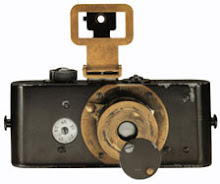When: 1948
Why: first commercially available instant picture camera.
This is the first Polaroid model, and an instant hit on the market. Camera was easy to use, black/white (actually brown/white) photo was ready in one minute, almost automatic (only 8 settings of shutter/aperture) usage. It's not the first instant camera, by no means, but it's the first successful and mass-produced camera. You can find a remarkable description of the camera at The Land List web-site.
The first instant photo camera was actually the "Patent Camera Box" (1857) by Bolles & Smith, also American company. It was a wooden-box, wet plates camera, but it was not very successful on the market.
